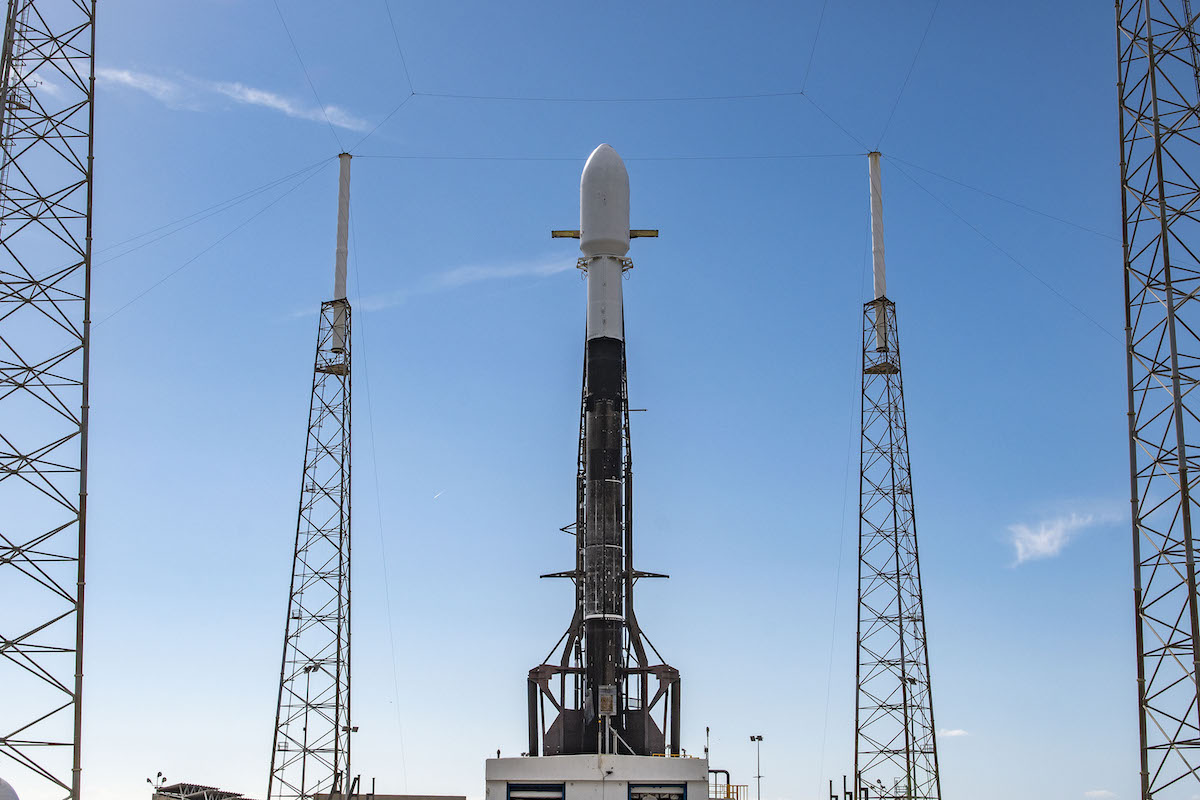
SpaceX plans to land a Falcon 9 rocket booster back at Cape Canaveral around eight-and-a-half minutes after launch Thursday in the company’s first onshore rocket recovery since last June.
The launch company warned Central Florida residents they could hear one or more sonic booms as the 15-story-tall booster makes its way back to Landing Zone 1 at Cape Canaveral, following a planned launch at 10:25 a.m. EST (1525 GMT) Thursday.
SpaceX said weather and other conditions could affect what residents experience during the rocket’s return to Earth.
The booster, a veteran of nine previous missions, is set to loft a batch of 105 small satellites from customers in 20 nations. The mission is designated Transporter 3, SpaceX’s third large-scale dedicated small satellite rideshare launch.
For its 10th launch, the booster will head southeast Cape Canaveral, then turn south to fly parallel to the east coast of Florida, taking aim on a polar, sun-synchronous orbit.
“Falcon 9 will fly along Florida’s eastern coast over the ocean and may be visible from the ground,” SpaceX said in a statement.
The cylindrical booster stage, scarred with dark exhaust residue from its nine previous launches and landings, will shut down its nine Merlin engines at T+plus 2 minutes, 19 seconds. A “boost-back” burn using three of the rocket’s engines will zero out the first stage’s supersonic downrange velocity, allowing it to reverse course and return to Cape Canaveral for landing about eight-and-a-half minutes after launch.

Four landing legs will extend from the base of the rocket as it descends toward Landing Zone 1, one of SpaceX’s two rocket landing pads at the military launch station. A single Merlin engine, capable of throttling to control the rocket’s sink rate, will provide the final thrust to guide the rocket toward landing on the concrete pad.
SpaceX typically lands Falcon 9 boosters on drone ships on missions carrying heavy cargo into space, or flights hauling payloads to high-altitude orbits.
On launches with lighter payloads, the booster has enough of a propellant reserve to turn itself around using a boost-back burn just after stage separation. That will be the case for the launch Thursday.
SpaceX’s upper stage, meanwhile, will fire its single Merlin engine for six minutes to reach a parking orbit as it flies over the Florida Straits, Cuba, and the Caribbean Sea. After coasting over Antarctica, the second stage will reignite its engine for a brief two-second firing at T+plus 55 minutes to reach the mission’s planned 326-mile-high (525-kilometer) polar orbit to begin a 28-minute sequence of satellite deployments.
The first of the mission’s satellite payloads will separate from a carrier pod more than 59 minutes into the mission. The last of the payloads will be released at T+plus 1 hour, 27 minutes.

The payloads on the Transporter 3 mission include 44 SuperDove CubeSats for Planet’s optical Earth observation fleet, five radar remote sensing microsatellites for ICEYE, Capella, and Umbra, and a Ukrainian imaging satellite named Sich 2-1.
There are numerous other CubeSats and nearly two dozen satellites called PocketQubes, some as small as a soda can.
The propulsive booster landing after the Transporter 3 mission will mark the 21st touchdown of a Falcon 9 first stage at Cape Canaveral Space Force Station, and the 102nd intact recovery of a Falcon booster overall. There have been 78 successful booster landings on SpaceX’s fleet of drone ships, and three rocket landings at Vandenberg Space Force Base, California.
Email the author.
Follow Stephen Clark on Twitter: @StephenClark1.
